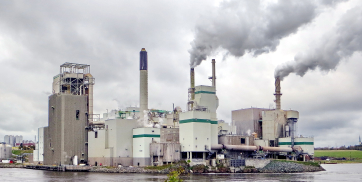On November 11th, almost one year after the first draft release, EPA posted a supplemental proposal on methane regulations for oil and gas facilities. The new rules are ambitious and aim to achieve even more comprehensive emissions reductions than initially targeted in the first draft. According to EPA projections, by 2030, the supplemental proposal would reduce methane emissions from covered sources by 87 percent compared to 2005 levels, 13 percent more than projected for the 2021 proposal.
While strengthening requirements, EPA also highlighted its intention to promote innovation and simplify the implementation of advanced technologies. The current framework reflects inputs and information received from diverse perspectives during the public comment period. To help understand, we went ahead and summarized the proposed monitoring requirements and how alternative technologies could be used for compliance.
Monitoring Requirements
After considering the comments received, EPA used modeling and available datasets to propose monitoring frequencies. While different monitoring techniques were evaluated, EPA did not add facility-type exemptions. The monitoring requirements, summarized below, were defined based on specific types of equipment on site.
Table: Fugitive Emissions monitoring requirements by source category.
| Source Category | Monitoring Requirements |
| Single wellhead-only sites and small well sites | Quarterly AVO inspections |
| Multi-wellhead-only sites with two or more wellheads | Semiannual OGI (or EPA Method 21) monitoring and quarterly AVO inspections. |
| Well sites and centralized production facilities with major production and processing equipment | Quarterly OGI (or EPA Method 21) monitoring and bimonthly AVO inspections. |
| Compressor Stations | Quarterly OGI or EPA Method 21 monitoring and monthly AVO inspections1 |
1EPA commented that even though small company compressor stations are not human-crewed 24 hours a day, they are visited weekly, if not daily. Therefore, monthly AVO requirements would not increase monitoring costs.
Regulatory Framework for Advanced Technologies Deployment
Besides OGI surveys and AVO inspection requirements, EPA also proposed alternative screening and continuous monitoring options. For screenings, instead of requiring a fixed screening survey frequency for all technologies (as proposed in the initial draft), the EPA is proposing a survey matrix, where the minimum detection threshold of the screening technology determines the frequency of screening surveys and whether an annual OGI survey is needed as a supplement to the periodic screening surveys. The tables below describe the details of the screening matrix for facilities required to conduct quarterly and semiannual OGI ground-based monitoring.
Table: Survey matrix for alternative periodic screening (facilities subject to quarterly OGI monitoring).
| Minimum Screening Frequency | Minimum Detection Threshold of Screening Technology1 |
| Quarterly + Annual OGI | ≤1 kg/hr |
| Bimonthly | ≤2 kg/hr |
| Monthly | ≤4 kg/hr |
| Bimonthly + Annual OGI | ≤10 kg/hr |
| Monthly + Annual OGI | ≤30 kg/hr |
1 Based on a probability of detection of 90 percent.
Table: Survey matrix for alternative periodic screening (facilities subject to semiannual OGI monitoring).
| Minimum Screening Frequency | Minimum Detection Threshold of Screening Technology1 |
| Semiannual | ≤1 kg/hr |
| Triannual | ≤2 kg/hr |
| Triannual + Annual OGI | ≤5 kg/hr |
| Quarterly + Annual OGI | ≤15 kg/hr |
| Monthly + Annual OGI | ≤30 kg/hr |
1 Based on a probability of detection of 90 percent.
For screening-based programs, when a periodic screening survey identifies emissions, a ground-based survey is required to identify the sources, and repairs must be performed within 30 days of the screening survey. If the ground-based survey confirms that a failure of a control device caused emissions, the owner or operator must initiate a root cause analysis and determine appropriate corrective action within 24 hours of the ground-based survey.
For continuous monitoring, the new rules proposed a framework where operators using continuous monitoring technologies would be required to conduct root cause analysis and corrective action whenever a methane emission rate action level is exceeded at the boundary of a facility. To standardize the use of these systems across the industry, the EPA proposed two action levels detailed in the table below:
Table: Long-term and short-term action levels proposed for continuous monitoring system
| Source Category | Level | Action Level |
| Wellhead-only sites | Long term | 1.2 kg/hr, rolling 90-day average calculated each day |
| Short term | 15 kg/hr, rolling 7-day average calculated each day | |
| Other well sites and compressor stations | Long term | 1.6 kg/hr, rolling 90-day average calculated each day |
| Short term | 21 kg/hr rolling 7-day average calculated each day |
To be used as an alternative technology, the adopted continuous monitoring system must be sensitive enough to trigger at the proposed action levels (must have a detection level an order of magnitude less than the proposed action level) and must produce a valid mass emissions rate (i.e., kg/hr) from the site at least once every twelve hours. When the methane level exceeds the threshold, a root-cause analysis must be performed within 5 calendar days, followed by a corrective action that must be completed within 5 days of identification if triggered by a short-term action level and 30 days if triggered by a long-term action level. If upon completion of the initial corrective actions, the continuous monitor readings remain above an action level, or if all identified corrective action measures require more than 30 days to complete, the owner or operator would be required to develop a corrective action plan and submit it to the Administrator within 60 calendar days of the initial action level exceedance.
During the framework design, EPA was aware that some continuous monitoring systems are not designed to quantify site-level methane emissions rates (e.g., camera-based continuous systems). However, EPA methods require alerts based on rates to determine mitigation equivalency. For the next round of comments, they are soliciting inputs on how they could fit those systems within the alternative continuous monitoring approach.
Alternative technologies approval procedure
The EPA received comments from industry, state agencies, and non-governmental organizations, acknowledging that review and approval of individual monitoring plans increase the burden on industry and regulatory bodies. To overcome this problem, EPA proposed that once an alternative method has been approved, any owner or operator will be able to deploy it. To streamline the application process, EPA proposed that applications for an alternative method must contain the following information at a minimum: (1) The desired applicability of the technology, (2) A description of the measurement systems, (3) Supporting information verifying that the technology meets the desired detection threshold(s) as applied in the field (4) A detailed description of the alternative testing procedure(s) (5) Standard operating procedures. Finally, the EPA proposed a defined timeframe to issue either an approval or disapproval within 270 days of receipt of the request.
What does this mean for me?
If your organization wants to understand the future cost of the new regulations and determine which deployment strategy to use, our team of experts would be happy to introduce you to our custom solutions. At Highwood, our fugitive emissions team uses LDAR-Sim, an open-source virtual environment, to evaluate emissions reduction performance, cost-effectiveness, compliance, and safety of different LDAR programs. Feel free to contact us by email at [email protected] for a zero-pressure, zero-obligation chat.





